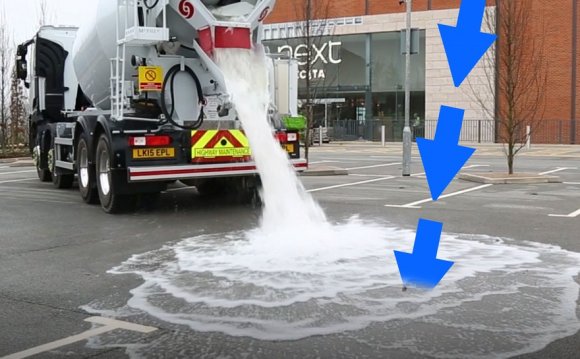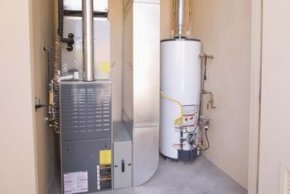
 A damp concrete floor can create a musty odor.
A damp concrete floor can create a musty odor.
Concrete's porous nature means that water from under your home can seep up through your concrete floor, making it damp. This can cause issues with mold and mildew, especially if you have carpet or furniture on top of the concrete. Basements and garages - the typical rooms with concrete floors - also suffer from poor air circulation, giving the moisture nowhere to go once it seeps through the floor. Sealing the concrete can help eliminate the dampness on your floor.
Check for Dampness
Before you seal your floor, check to see how damp it is. Tape a small square of clear plastic to the floor using painter's tape. After 24 hours, check the plastic to see if water has condensed underneath it. If so, your floor may be too damp to seal - most sealants must be applied to a dry floor. Clean and dry your floor before sealing it.
Clean the Floor
Before drying your floor, clean it well to remove dirt and any built-up mildew. Vacuum or sweep it thoroughly, then scrub it with a mop. Use a solution of one part bleach to four parts warm water to clean the floor. The bleach has the added benefit of helping to kill mold and mildew that might have accumulated on the floor. Pay special attention to the corners, where insects and mold tend to live. For deeper cleaning, rent a rotary floor scrubber with and abrasive pad designed for concrete and use it to apply trisodium phosphate, or TSP, to the floor. Rinse the floor thoroughly, then use a wet-dry vacuum to remove the water.
Dry the Floor
Get your floor as dry as possible before sealing it. It's best to wait for days when it's not rainy and the humidity isn't too high to help the floor dry faster. A dehumidifier can help draw out the water, or a floor fan can help circulate the air and speed evaporation of the dampness. Continue drying the floor until your dampness test with the plastic square stays dry overnight.
Seal the Floor
Most sealers are clear, which can make application tricky, as even coverage is key to preventing future dampness in your concrete floor. It's best to paint small areas at a time to ensure complete coverage with a thin layer of sealer; too much sealer can lead to bubbles as it dries. Use a sealer designed for concrete moisture protection, such as an epoxy concrete sealer, which often comes in two parts that must be mixed immediately before applying. Pay special attention to the corners and edges of the floor, where cracks can let extra moisture seep in. Although some sealers can be applied with a paint sprayer, many floor sealers are best applied with a standard paint roller. Completely cover a small area with a thin layer of sealer, then move on to the next area. Do this continuously until the entire floor is finished; sealers are most effective when you create a single, solid layer without the seams that can develop if you spread the work over more than one day. Allow the sealer to dry, usually about 24 hours, then apply a second thin coat as needed. Two-part epoxy formulas require use of a freshly mixed batch for each coat. After drying for another 24 hours, the floor should be ready for new carpet or paint without dampness.









